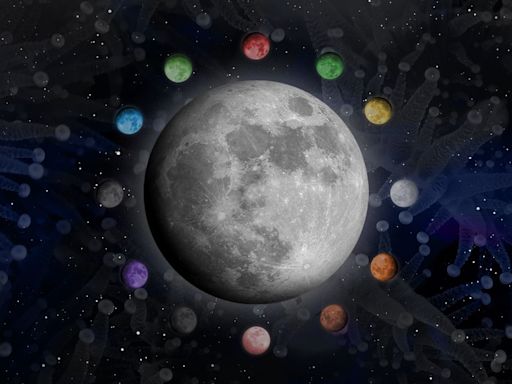Search results
The Moon is Earth 's only natural satellite. It orbits at an average distance of 384,400 km (238,900 mi), about 30 times the diameter of Earth. Over time Earth's gravity has caused tidal locking, causing the same side of the Moon to always face Earth.
The Moon makes Earth a more livable planet by moderating our home planet's wobble on its axis, leading to a relatively stable climate. It also causes tides, creating a rhythm that has guided humans for thousands of years.
Loading Moon Maps... ... Search
1 day ago · Moon, Earth ’s sole natural satellite and nearest large celestial body. Known since prehistoric times, it is the brightest object in the sky after the Sun. It is designated by the symbol ☽. Its name in English, like that of Earth, is of Germanic and Old English derivation.
The Moon's weak atmosphere and its lack of liquid water cannot support life as we know it. Apollo astronauts brought back a total of 842 pounds (382 kilograms) of lunar rocks and soil to Earth. We are still studying them. The Moon was likely formed after a Mars-sized body collided with Earth several billion years ago.
Mar 14, 2012 · 5.4M views 12 years ago. Although the moon has remained largely unchanged during human history, our understanding of it and how it has evolved over time has evolved dramatically. Thanks to new ...
The Moon is opposite the Sun, as viewed from Earth, revealing the Moon’s dayside. A full moon rises around sunset and sets around sunrise. The Moon will appear full for a couple of days before it moves into…
Like Earth, the Moon has a day side and a night side, which change as the Moon rotates. Moon Phases Between four and seven times a year, Earth, Moon and Sun line up just right to create the cosmic-scale shadow show known as an eclipse.
Sep 7, 2023 · New Moon: The Moon is on the Sun-side of Earth, so the Earth-facing side of the Moon is not illuminated and appears dark. Solar eclipses can only occur during a New Moon. Waxing Crescent: A small ...
Jul 3, 2019 · July 03, 2019. • 8 min read. The moon, Earth’s sole natural satellite, is our constant companion. It has circled our planet for billions of years, since before the first sparks of life ...



